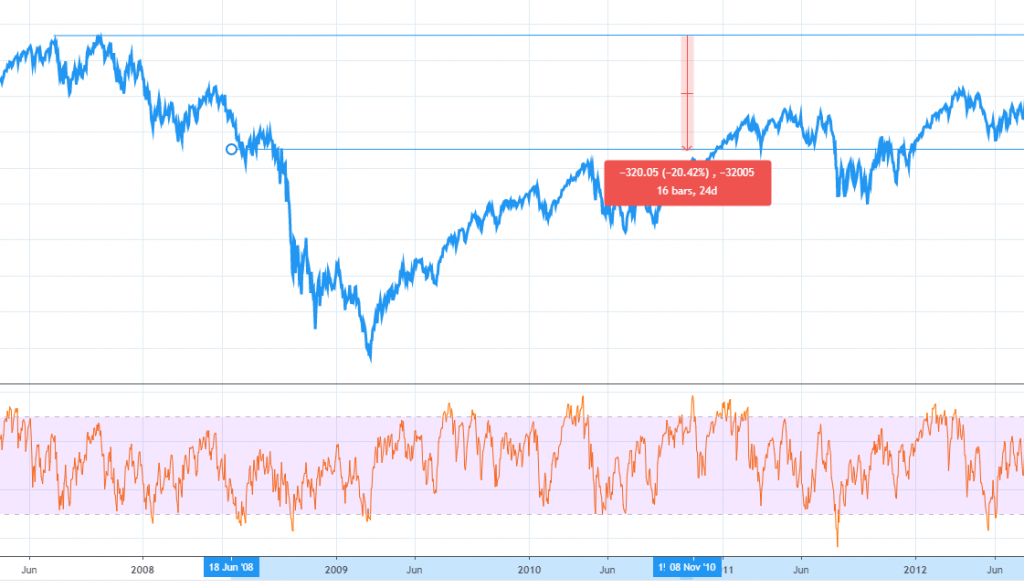Bear Market Definition: Understanding the Financial Landscape in Turbulent Times
What is a bear market
A Bear market is defined by a 20% fall of a stock market index from its high recorded during the previous business cycle.
Bear Market Example

The latest bear market experienced in the S&P 500 was in 09/07/2008. S&P 500 closed on 09/10/2007 at a high of 1565.15. The bear market level was reached on 09/07/2008 with a close of 1244.69 (1565.15 x 0.8 = 1252.12).
A bear market is the long downward movement interrupted by powerful rallies. Bear markets are caused during economic recessions and last until stock prices have discounted the worst outcomes for the global economy.
There are three phases of a bear market: the first phase of the bear market represents the abandonment of hopes from investors having bought stocks at the hights; the second phase of the bear market occurs during the period where the stock market reflects depressed corporate earnings due to economic recessions and the third and sharpest phase of the bear market occurs due to distress selling of stocks regardless of their value in search for liquidity.
The most important characteristic of a bear market movement is that the technical rallies experienced are sharp and never penetrate the previous bull market tops.
Statistically, during bear market the US stock market has lost 30% of it’s value from the previous bull market high, and the bear markets have last on average 1.1 years in duration.
At the end of the bear market, the stock market is immune to further bad news and pessimism. This marks the bottoming of the stock market.